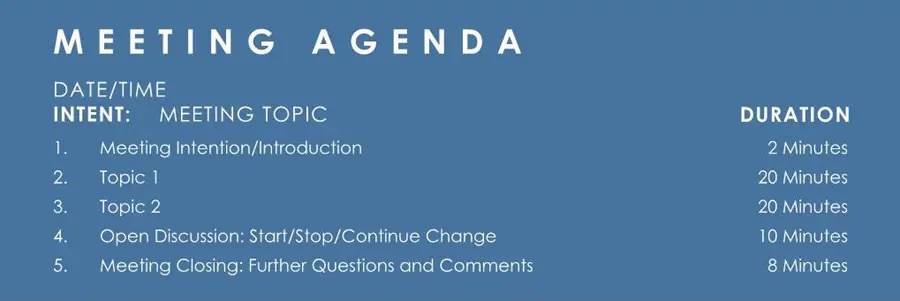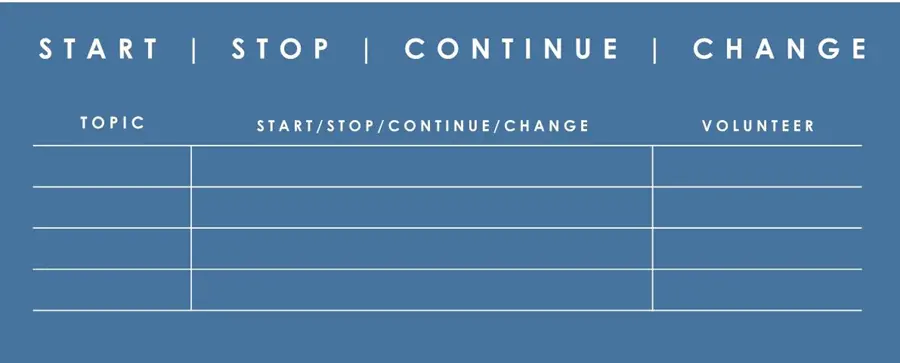6 Facilitation Strategies to Solicit Participation in Meetings
- Articles and Resources
- > Interpersonal and Communication Skills
- > 6 Facilitation Strategies to Solicit Participation in Meetings
Meetings can be tough to navigate, and that’s something anyone who works as part of a team would likely attest to. The fact of the matter is that not everyone enjoys speaking in groups. In fact, some people are downright uncomfortable with it. It’s important to note that while participation is ideal, attendees should only participate because they want to participate, and never because they feel pressured to.
As a facilitator, you’re charged with alleviating discomfort and creating a non-judgemental environment for your team to engage in. Here’s the catch, though; you’re also in charge of keeping the group engaged. Your role is to garner participation from attendees while at the same time ensuring satisfactory comfort and security levels.
In short, you don’t want to put anyone on the spot, and you don’t want to leave anyone out. And yet, you want to receive input from everyone. If this sounds overwhelming or improbable, don’t panic! Yes, this is a balancing act that requires patience, empathy, and finesse. It’s not a cakewalk. But it’s not impossible, either. In fact, the odds are in your favour.
A successful facilitator should consider everyone’s communication style while maintaining balanced and productive participation. This is no small feat, especially considering the many personality types that make up any given workplace. In addition, the facilitator is tasked with the responsibility of making sure each participant is heard and considered in equal measure.
So how can a facilitator elevate participation and eliminate discomfort among the group? What steps can be taken to gain constructive participation from the entire room? As it turns out, there are several ways to encourage healthy participation from all meeting attendees. To illustrate this, we’ve rounded up six tips that can be applied to virtually any type of work and any kind of meeting.
1. Prepare and distribute an agenda
It’s important to outline the intent and structure of the meeting. If meeting participants enter the situation without a clear understanding of the subject and structure, they will be less comfortable and therefore less likely to participate. Clarity must be a high priority in order to achieve the smoothest communication possible.
Send the agenda with a friendly memo to all. This opens up communication lines for any questions participants may have beforehand, and sets a precedent for productivity. In the memo, be sure to inform all participants that they are welcome to offer input towards any additional topics they feel should be addressed.
Asking for team feedback on the agenda is a great way to gain participation even before the meeting takes place. That’s because this tactic allows participants to understand that their input is valued. When people are invited to offer feedback, it promotes the notion that their thoughts and feelings matter. As a result, they are likely to feel safe and respected. That’s important when considering how to open people up and get a conversation going.
Below is an example of a basic meeting agenda, which you can tailor to the specific requirements of your meeting.
2. Create a safe space for the group to engage in
One way to do this is to start off with positive feedback of the group’s previous performance. This usually puts everyone at ease, inspiring confidence and trust.
You could say, for example: “Thanks for being here, everyone. Before we begin, I ‘d like to thank you all for your hard work and taking the time to engage with us today. We appreciate all of your contributions.”
If you want to get more detailed, consider taking this a step further by acknowledging a recent accomplishment or development that the team has completed. For example: “I really loved how we all worked together on ________. The strategy we came up with proved very successful. Let’s keep that momentum going today.”
The power of this tactic is twofold; Firstly, it makes everyone feel accomplished and valued. Secondly, it encourages a team mentality right off the bat. Focussing on successes and small wins is a great way to build momentum.
3. Be mindful of the time of day
If you’re looking for a high level of participation, it’s important to schedule the meeting at a productive time of day. Avoid scheduling meetings first thing in the morning to reduce the chances of a tired or cranky team. Allow them to take care of their morning emails and have their coffee, so that they’re ready to take on the meeting with a fresh mind.
On the other side of the coin, avoid scheduling the meeting right after lunch, when people are feeling full and potentially sleepy. The exception is if you plan a highly engaging activity that gets people moving around. Another time to try to avoid is towards the end of the day, when the team has lost steam and may be counting down the minutes.
So what time frame are you left with? A fairly safe window to schedule an effective meeting for optimal participation levels is between 10 am and 1:30 pm.
4. Use the “Start, Stop, Continue, Change” model
This is an easy way to structure any meeting, regardless of the topic. The method invites participants to express themselves freely, yet in an organized manner. It poses the following questions:
What needs to start?
What needs to stop?
What should continue?
What should change?
Open up the discussion by going through these categories and requesting a volunteer for each one. When a team member claims a category, they become accountable for completing that task. If participants do not readily volunteer, consider which topic applies to each individual’s strengths and offer that category to them, explaining why you think they would be a good fit.
This strategy is beneficial because it allows participants to play on their strengths and contribute effectively. You can facilitate this exercise using a whiteboard, a screen, or simply through verbal discussion with manual notes. Use your discretion to determine which works best for the meeting, keeping in mind the simpler the tool, the less distracting it will be.
5. Introduce a “Speaking Object”
It can be helpful to pass an object to each staff member when it’s their turn to speak. To ensure that nobody feels put on the spot by this, include it in your agenda. Name the object and its purpose as well as how it’s going to be set up. The one rule that should be present across the board is that the holder of the object is the only person permitted to speak while they hold it.
For example, let’s say the speaking object is a beanbag. When a question is put forth to the group, the facilitator can either say; “Who wants the bean bag?”, and toss it accordingly, or they can simply toss it to someone they’d like to hear from. That person can either then share their thoughts or pass it to someone else if they don’t wish to answer.
This is a very effective way to encourage participation, with the added bonus that everyone gets heard without the pressure of multiple people jumping in. ‘No interruptions’ means everyone gets a fair shot at speaking their mind. It’s great to keep a healthy flow going, but it’s also important that everyone has the chance to speak without feeling rushed or bulldozed. You could even consider using a new object for each meeting, with a designated staff member bringing in an object each time. You might be surprised at how something so small can inspire creativity, create a team mentality, and keep people engaged.
6. Implement a feedback/suggestion box
The best way to get a sense of how the meeting felt to participants, and how to garner more participation if needed for next time, is to allocate a few minutes after the meeting for participants to write their thoughts down.
This offers attendees a safe space to express themselves without feeling put on the spot. It also allows those who are less comfortable speaking to address things they may not have felt comfortable verbalizing. Staff can do this anonymously if they so choose. Read through all feedback and take it into consideration for your next meeting. You’re likely to find some amazing ways to solicit participation straight from the source.
Do you facilitate meetings on a semi-regular basis?
To learn more facilitation techniques to manage meetings effectively and efficiently, consider registering for our Practical Facilitation Skills workshop.

